Nestled near the Columbia River in Wood Village, Oregon, is the largest Walmart in the Portland region. The building spans three-and-a-half football fields, but it’s dwarfed by something else: the surrounding parking lot, twice as big as the store itself.
When it expanded from a Walmart to a Walmart Supercenter in 2004, its floor space increased by 45 percent. Its parking lot grew less, though, only adding 36 percent more spaces. Turns out, Walmart has been quietly reducing its parking ratios for years.
Case study: Walmart follows consumer behavior, reduces parking
“Every time we reevaluate, we pull it down a little bit,” said John Clarke, the head of real estate for Walmart, in a report on parking reform published this year by the Institute for Transportation & Development Policy.
That’s great news for the environment. More parking leads to more driving, suburban sprawl, and urban heat islands.
At the peak of its parking investment, Walmart was building 6 parking spaces per thousand square feet of store. “Now we’re willing to have as low as 4 spaces per thousand,” said Clark. “That means on a big store, we went from 1,200 to 800 spaces. It has a big impact: on the size of the land needed for the store, the cost of striping and cleaning the parking lots, just to light it at night. It’s a significant cost factor for the facility to have one less stall.”
Fast forward to 2021, and most of the spots that the Wood Village Walmart Supercenter added are no longer in use at all. In fact, Walmart has chained off about 25 percent of its parking lot, effectively shrinking it to a ratio to 3.5 spaces per 1,000 square feet. Even on Black Friday afternoon, the busiest shopping day of the year, the lot was still nowhere near full. Here’s the one-quarter of Walmart’s parking that is now chained off from use:
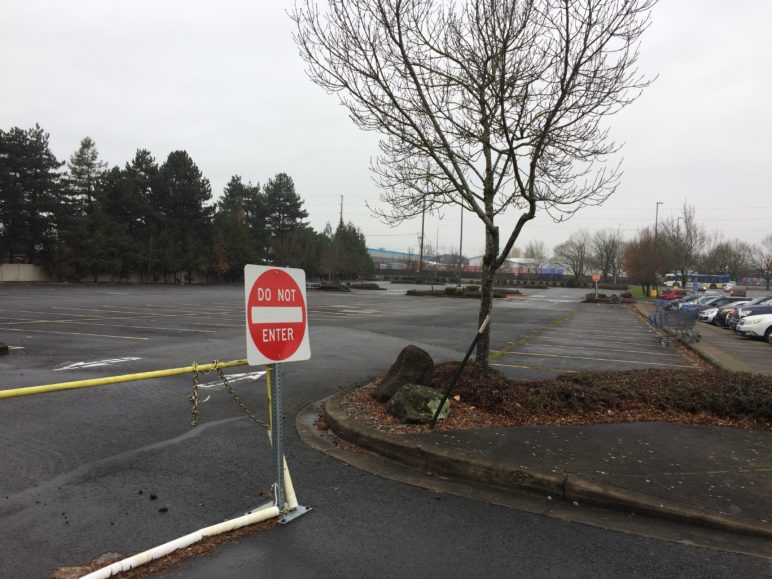
Parking lot expansion no longer in use at Walmart Supercenter in Wood Village. Photo by Catie Gould.
But nobody was complaining. Even with one-quarter of the lot roped off, the remainder still wasn’t full:
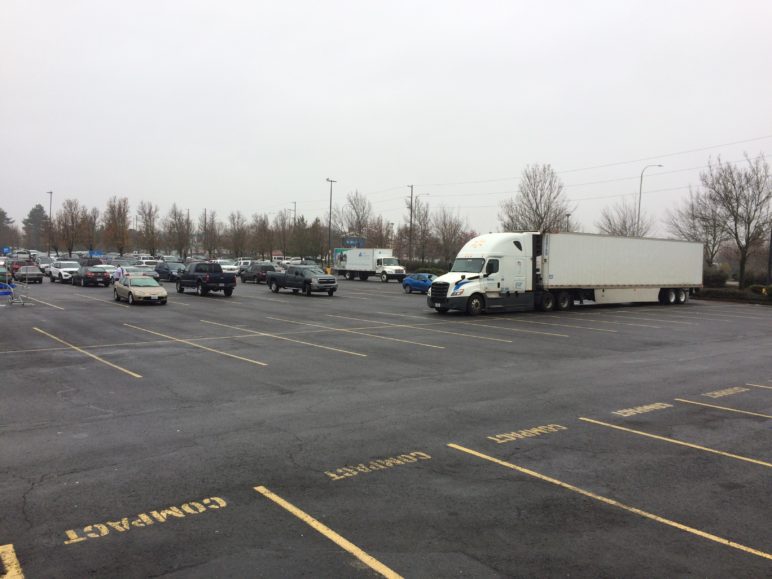
An abundance of available parking at Woodland Center Walmart Supercenter on Black Friday. Photo by Catie Gould.
Online shopping, revved by pandemic, continues to shrink parking needs
According to Clarke, the increase in online sales is driving the need for less parking.
When the US Department of Commerce started tracking e-commerce in 1998, it made up 0.2 percent of the retail market. Buying online has outpaced brick-and-mortar sales ever since. Digital Commerce 360 reports that from 2011 to 2019 online sales doubled from 7.1 percent of all retail sales to 15.8 percent. Walmart has been ahead of that curve: it’s now second only to Amazon in online sales in the US and growing five times faster.
These trends had other retailers rethinking their real estate needs long before the pandemic hit. Macy’s, financially struggling from a downturn in foot traffic, unveiled a plan in 2017 to sell off parcels of extra parking and direct that cash back into its online market. “The fact of the matter is we don’t need the massive parking lots that we needed in the 1970s,” Doug Sessler, the head of Macy’s real estate division told analysts.
That same year Mark Hunter, a managing director for real estate investment company CBRE, told the New York Post that most municipalities require retailers to allow for five parking spaces per 1,000 square feet of retail space, but increasingly that ratio is becoming “antiquated.” Under those rules, businesses needed to dedicate 1.4 times more land to parking than to their actual stores.
If assumptions about how many shoppers were driving to stores were antiquated in 2017, now they’re ancient history. In 2020, e-commerce doubled its annual growth rate from the decade before, reaching 19.6 percent of all sales. Retailers think those trends are here to stay and are converting floor space to fulfilling online orders instead.
Portland’s Walmart on 82nd Avenue is using its parking lot to store shipping containers:
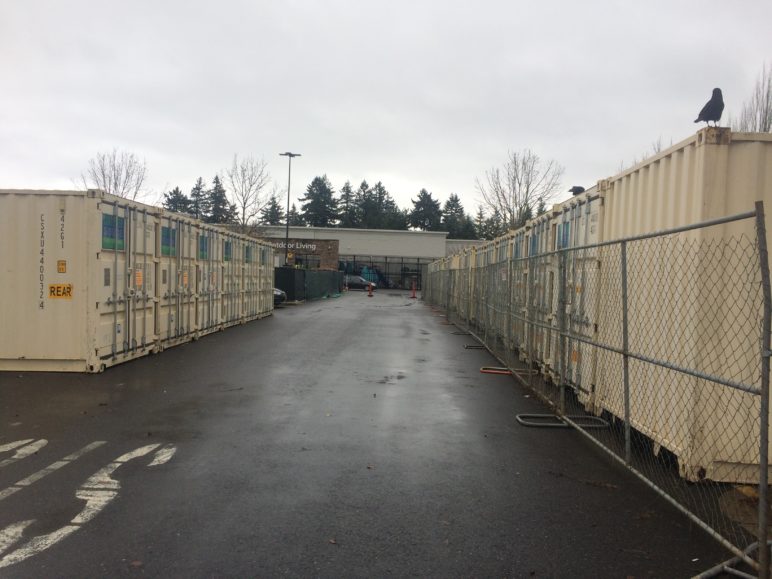
Storing shipping containers, not cars, at the Portland Walmart on 82nd Avenue. Photo by Catie Gould.
Despite a rebound in foot traffic, one in five customers who went out to stores over Thanksgiving weekend in 2019 still haven’t come back. Even on Black Friday, typically the busiest in-store shopping day of the year, more people shopped online than in stores, according to the National Federation of Retailers. Part of those sales are from people who bought online and then used curbside pickup, which reduces the amount of time spent at the store. And that leads to a lot of empty parking spots.
“We are driving the reduction in parking, rather than cities,” said Clarke. “We would ask for variances below their minimum requirements, and they were always approved. Most places are still using codes from 15 years ago.”
The future of retail parking: Right-sized, mandate-free
Clarke’s insights raise a question that governments at every level should be asking themselves: If a deliberately auto-oriented corporation like Walmart has to lobby local governments for exceptions to local parking mandates, how have the mandates affected smaller and less auto-oriented businesses?
The automobile era gave rise to present-day parking requirements, so what should the online era usher in? Keeping zoning codes in step with business trends would be cumbersome for cities, given how much change has happened over the last couple years and how much more is still to come.
Retiring parking mandates would end the need for cities to attempt these inevitably inaccurate predictions about the future of shopping. It’d also allow businesses to gradually evolve beyond an auto-centric model to something more sustainable that suits their own specific real-time needs. Even Walmart.

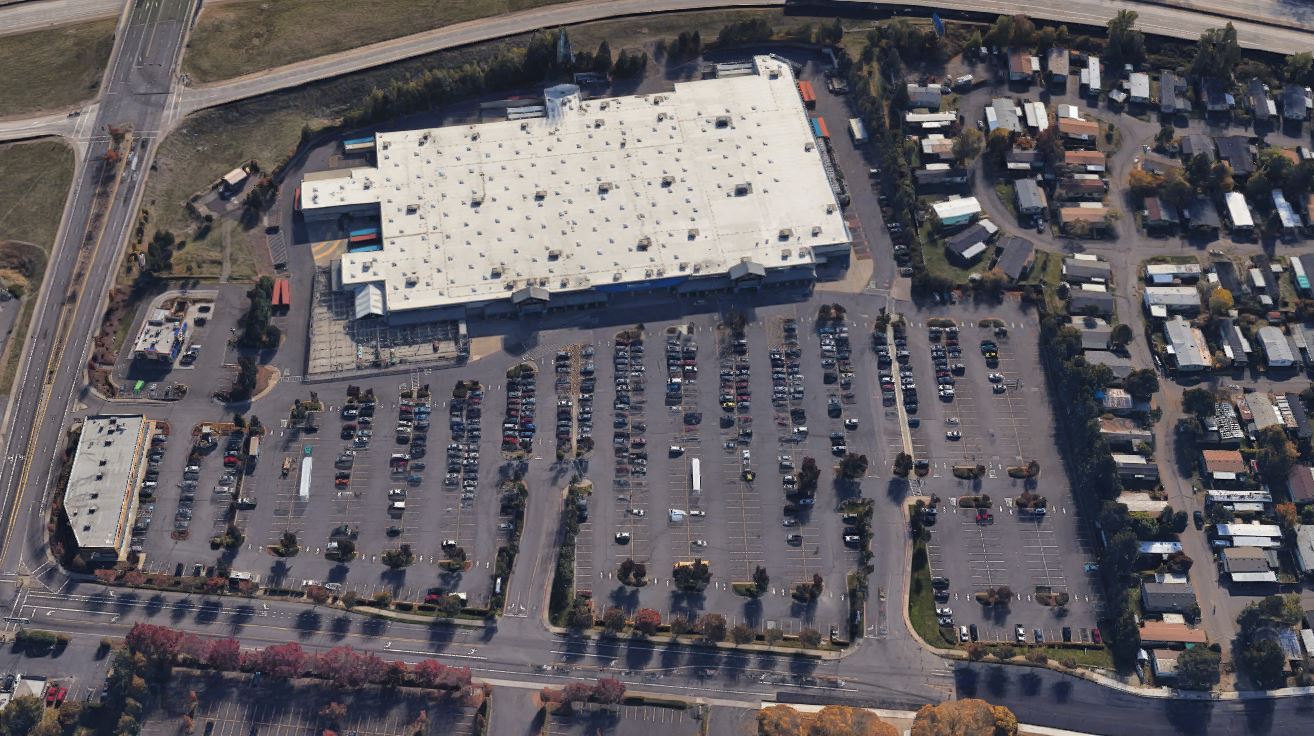
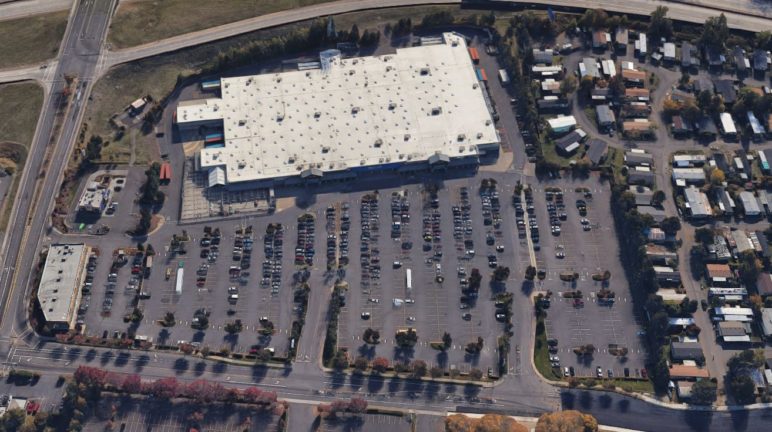







asdf2
Two businesses in particular that I see over and over again with huge, under-utilized parking lots are banks and post offices.
Back in the 1970’s, when concepts such as email and online banking did not exist, nearly everyone visited these places regularly, in person. Today, almost nobody goes to a bank or post office anymore. Yet, the parking lots are still sized to expect a 1970’s level of demand. The only reason for this think I of is outdated parking codes that nobody has bothered to revisit or revise.
W. K. Lis
How about using all that roof space for solar power? If not, then use green plants on the roof.
Reedman Bassoon
The problem is when things go the other direction. When the neighbors (residential or commercial) are buried in cars because there isn’t enough parking at the destination (Walmart, mall, etc) it gets REAL (thermonuclear) ugly. This is why the parking mandates came to be, and why the more liberal the city, the more neighborhood parking permit zones are created. Yes, I have had a retired judge in Berkeley get in my face and tell me directly that the street parking in front of his house BELONGS to him. The reason I couldn’t park in front of my nearby house was because the city came in and painted the curb red, because during the Oakland Hills fires, fire trucks couldn’t get through due to parked cars on both sides of the street. San Francisco has 29 different Residential Parking Permit zones (BTW, the teachers union arranges a special dispensation, because teachers HAVE TO drive to their schools and be allowed to park in the first visible spot). There are a couple dozen unionized civil servants whose job is to administer all this, collect annual fees, etc.
Frank L.
This study provides a lot of food for thought. But I have to wonder, while this may make sense for large businesses given today’s online shopping options, I’m left wondering about applicability to Downtown with small businesses, restaurants, etc. I think they may require special consideration 🤔 Reducing parking for them intuitively seems like reducing customer access and consequently revenue. Any thoughts or observations on that?